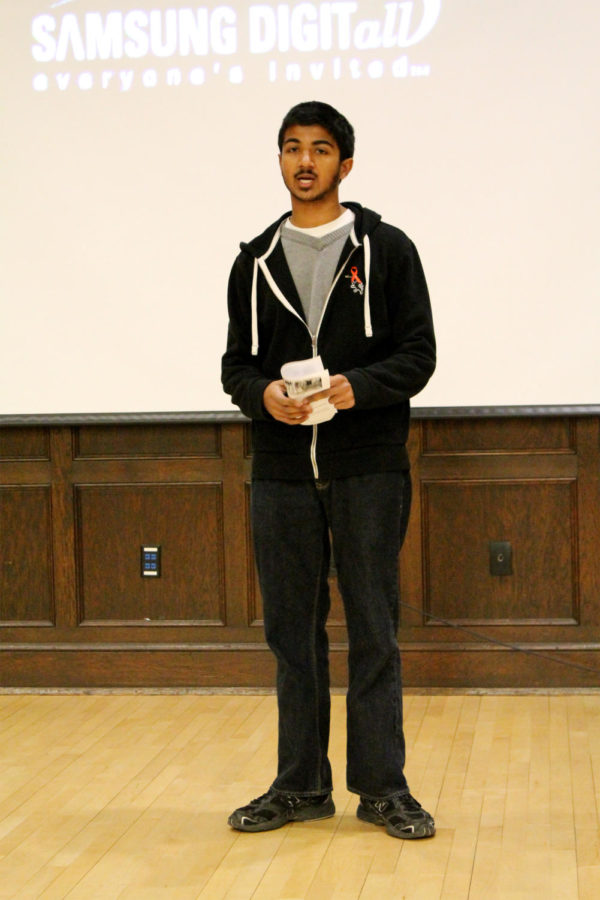Students find out “How to Survive A Plague” in the Memorial Union
Photo: Madison Martin/Iowa State Daily
Deepak Premkumar, president of the ISU Global Heath and AIDs Coalition, introduces the documentary “How to Survive a Plague” on Wednesday, Nov. 28, in the Memorial Union.
November 28, 2012
Many students gathered in the Memorial Union Wednesday night for the viewing of documentary: “How to Survive a Plague.” The 120-minute film follows a group of HIV positive, young men who helped the pharmaceutical industry find new drugs for people diagnosed. In the journey, these new drugs went from being experiments to actually being available to patients in record time.
The group of young men being followed in the film were constant activists; many of them were HIV positive themselves. Greenwich Village, an area of New York City, is where most of the meetings of AIDs Collation to Act Up Power (ACT UP) were held. AIDs Collation was an activist group of hundreds of people looking to take part in the AIDs epidemic.
Peter Staley is a constant and very important figure throughout the whole documentary. Footage is shown from the 1980s through ’90s. Staley being HIV positive himself quits his job as a bond trader and becomes a full-time activist for the disease.
Staley and other activists went on many protests and sit-ins, including the Federal Drug Administration headquarters. He also attended many International AIDs Conferences, pleading for the U.S. government and the FDA to rapidly increase the research on the HIV disease and speed up the return process on getting drugs approved so they could be administered to sick patients.
In 1987, the first HIV drug that was approved by the FDA was released to the public, AZT. AZT was $10,000 per year and was not widely available, causing protests, especially due to its cost. However, AZT was not found to be very helpful slowing down the AIDs epidemic.
Due to the fact AZT was the only FDA-approved drug on the market, people with HIV found different means to get drugs from other countries around the world. Of these included a drug approved and sold over the counter in Japan.
Around 1990, after the FDA passing of a few other drugs, a conclusion was made that those drugs were not helping enough to stop the epidemic, and they were considered “useless.”
Members of AIDs Collation felt defeated and as if everything they had fought for and were arrested for was all for nothing.
In the mid-1990s, drug company MERK came up with a drug that consisted of three previous medications that they believed would stop the HIV cells from spreading and infecting people who tested positive. This meant people could live a more normal life even though they were diagnosed with AIDs. This drug was called Saquinavir. The highlight of AIDs Collation’s group history was how they were able to push drug companies and the FDA to approve this drug within six short months.
Peter Staley and many other HIV positive men featured throughout the film are still alive today due to the efforts they put forth with AIDs Collation.
More information about the documentary can be found at www.surviveaplague.com.
“How to Survive a Plague” was show in light of World AIDS Awareness Week and was put on by the ISU Global Health and Aids Collation. Deepak Premkumar is their president, and another event is being held Nov. 29 in the South Ballroom of the Memorial Union. The event is entitled “The AIDs Epidemic: An Inside Perspective from Sub-Saharan East Africa.”







